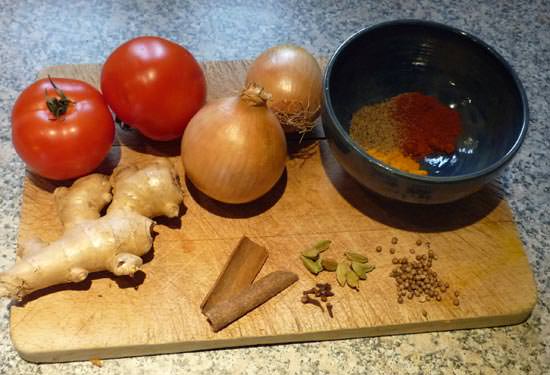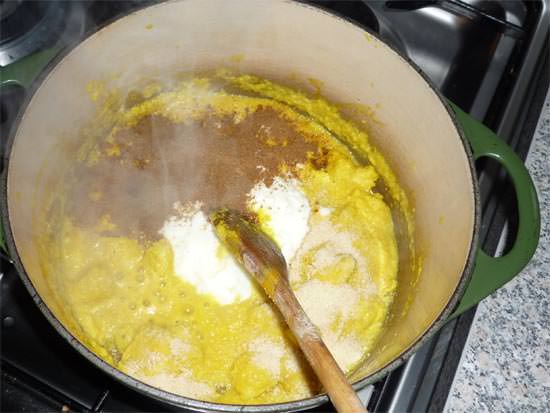When French students stay with us for a sejour linguistic here in the Gers, we’ve found that the majority have never eaten a curry, nor do they want to as they think that all curries are really hot!
Now there are very hot curries, for example Madras, Vindaloo and Phall. In fact, in England Phalls have become well-known as a choice for a Friday evening after a visit to a pub (un bistro) - mostly for young men to prove how macho they are. Yes, Phalls are very hot.
But there are so many other curries that are tasty and delicious without burning your mouth and lips. We’ve cooked Kormas and Dhansaks for students who have been happily surprised and asked for seconds. With all the accompaniments that go with the principal dish, such as poppadums, nan, raitas, chutneys and salads, curries are wonderful feasts (festins).
Our students have told us that curries are not very popular in France and that “curry powder” is something to be added in tiny quantities to give a vague flavour. We’ve noticed that it is now easier to find fresh spices (épices fraîches) in markets and shops here in France. It’s not difficult to mix spices to suit your preferences and many other curry ingredients are very familiar.

In Britain there are lots of brilliant pre-mixed powders for different curries, all with a distinct flavour. A search on-line would find a good selection.

Curries are very popular in Britain. Some people think that Chicken Tikka Masala is more popular than Fish and Chips or even the ubiquitous Roast Beef. There are not many towns or villages in Britain that do not have at least one curry house. In some of the large towns and cities there is an amazing choice, from a burning Vindaloo to a mild creamy Korma. Curries come from many different areas and countries from Nepal to Goa, Bangladesh to Bombay, Bengal to Madras and Burma to Singapore (to name just a few). This has also surprised many of our students who believed that curries are all similar and all only from India.
Bangladesh Kurma or Korma for 4 people
This recipe is from Bangladesh. It is not hot but mild (pas trop fort) and aromatic and would be great as a first taste of a home-cooked curry.
6 tablespoons ghee or vegetable oil
1 teaspoon saffron (or Tumeric)
4 tablespoons milk
4 teaspoons garlic puree
8 tablespoons onion puree
2 teaspoons garam masala
65 grams natural yoghurt
150 ml thick cream
2 tablespoons ground almonds
20 saffron strands
salt
Garnish
chopped fresh coriander
roasted whole almonds
- Mix the saffron or tumeric with the milk. Place the saffron strands in a little water to soak.
- Heat the ghee or oil and cook the chicken for 2 minutes, stirring, and then add the yellow milk. Stir for 2 minutes.
- Add the garlic puree and stir-fry for 2 minutes and then add the onion and stir-fry for 3 minutes. Then add the garam masala and continue to stir for 2 minutes. (For a total time of about 10 minutes and the chicken is half-cooked.)
- Add yoghurt, cream and ground almonds. Stir over a LOW heat for 10 minutes, then add a little water if the mix seems too dry.
- Add the water from the saffron strands.
- Simmer until the chicken is cooked. Taste and salt if necessary. Garnish with the coriander and almonds.

